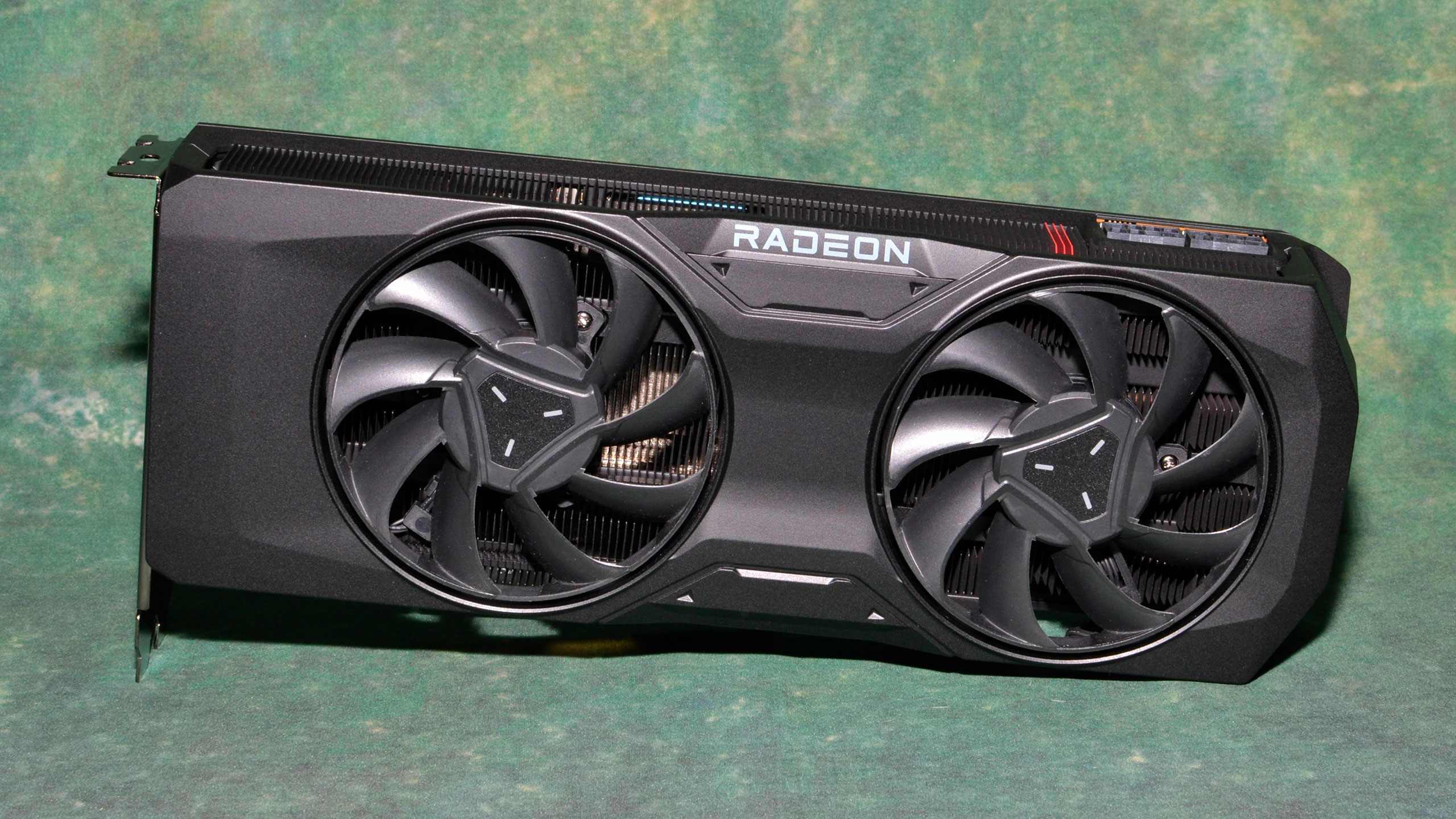Why you can trust Tom's Hardware
After 1440p ultra, the next most sensible resolution and setting target for the RX 7800 XT is 1080p ultra. It should easily handle any current game at these settings, with room for the future in most cases. CPU and other system bottlenecks can also come into play here, so the margins between the various GPUs will likely shrink compared to 1440p.
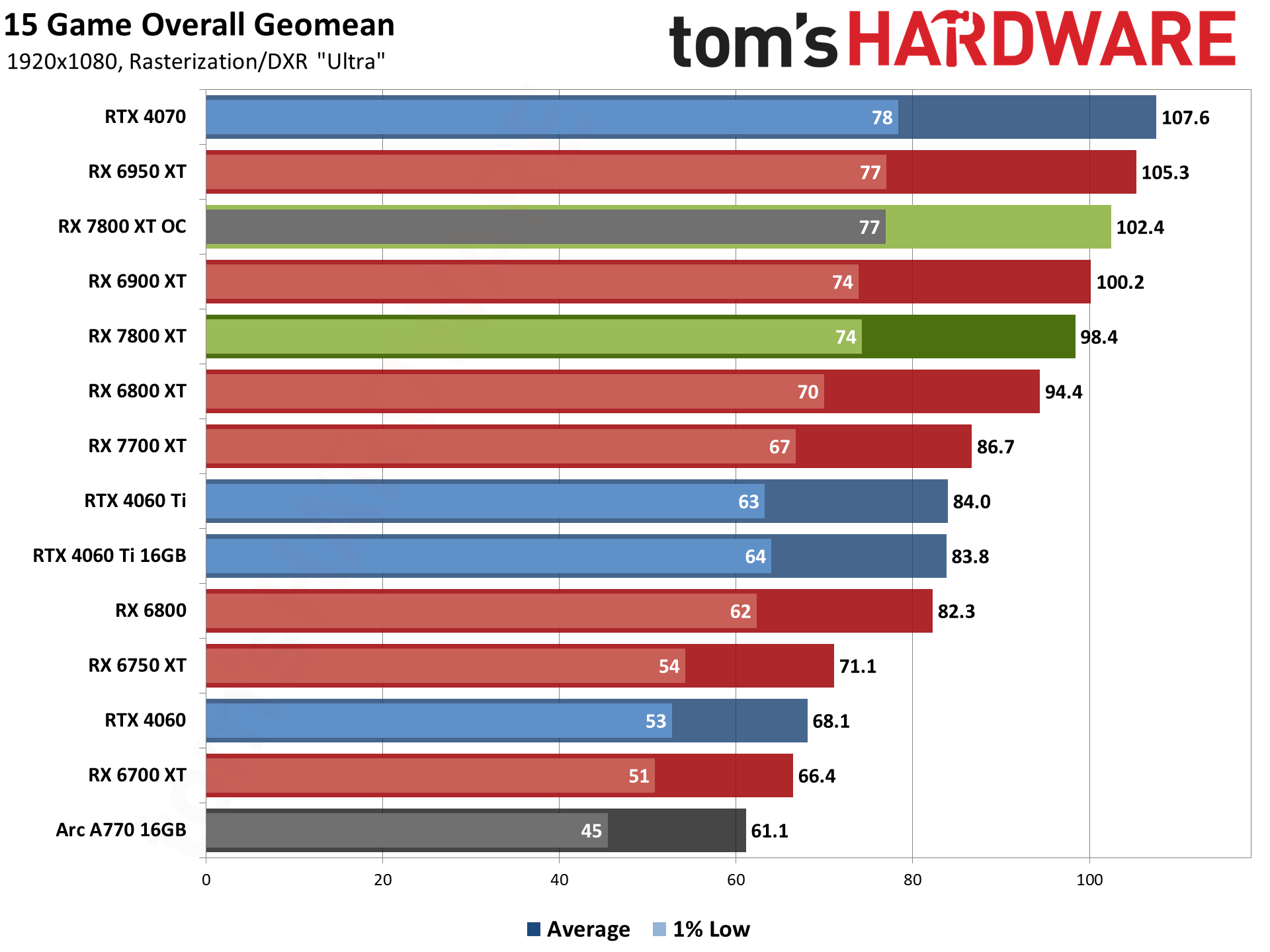
Compared to the RTX 4060 Ti (either the 8GB or 16GB variant, as they're basically tied at 1080p), the overall lead for the RX 7800 XT shrinks to 17% now — 8% less than the 1440p lead. As expected, the biggest changes are in the rasterization suite, where a few games clearly hit a CPU limit.
It's interesting to note that the RTX 4070 overall lead actually increases relative to 1440p, from 6% to 9%. That's likely partly due to memory bandwidth becoming less of a factor at 1080p. But overall, the standings don't change too much.

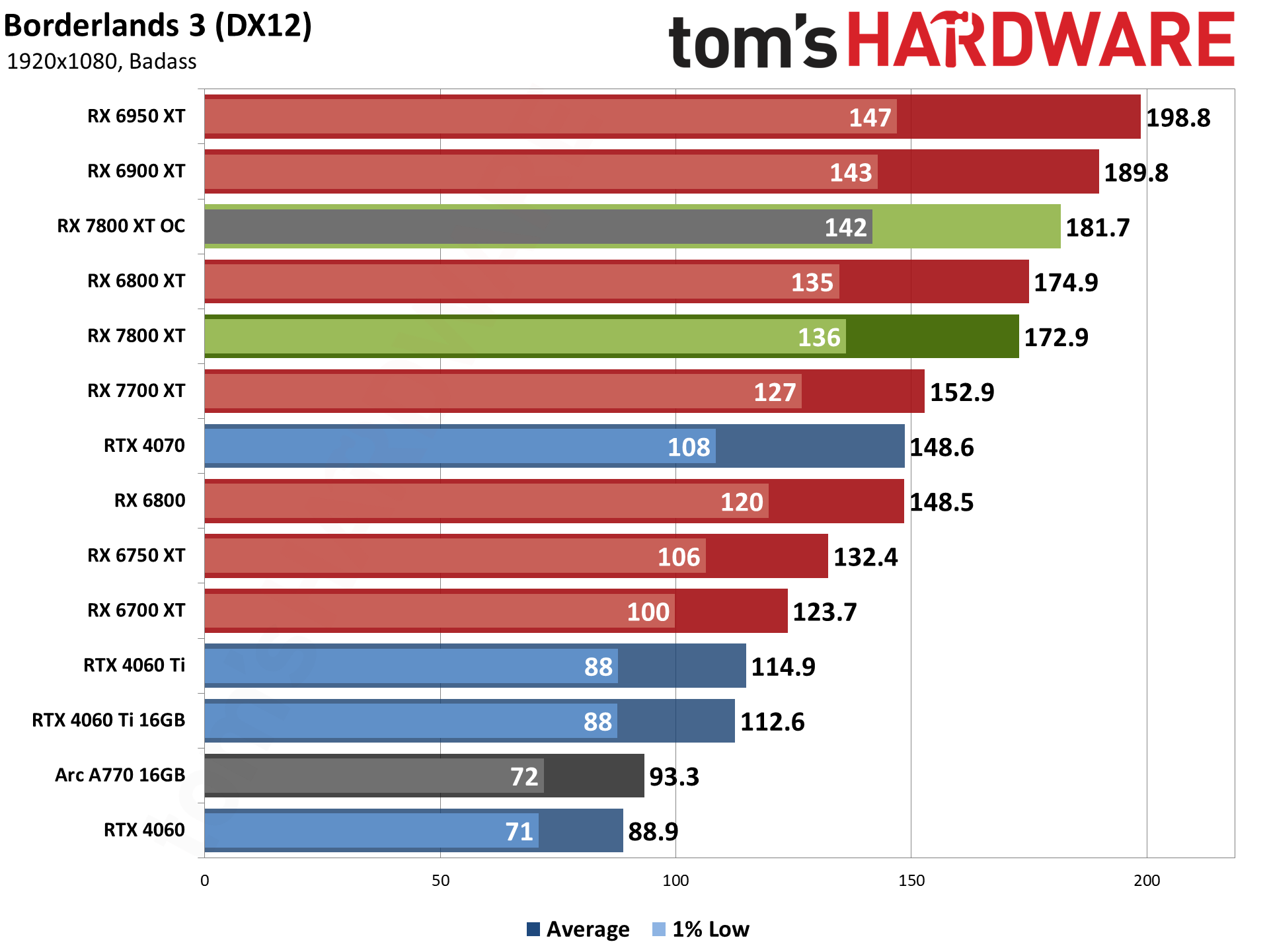
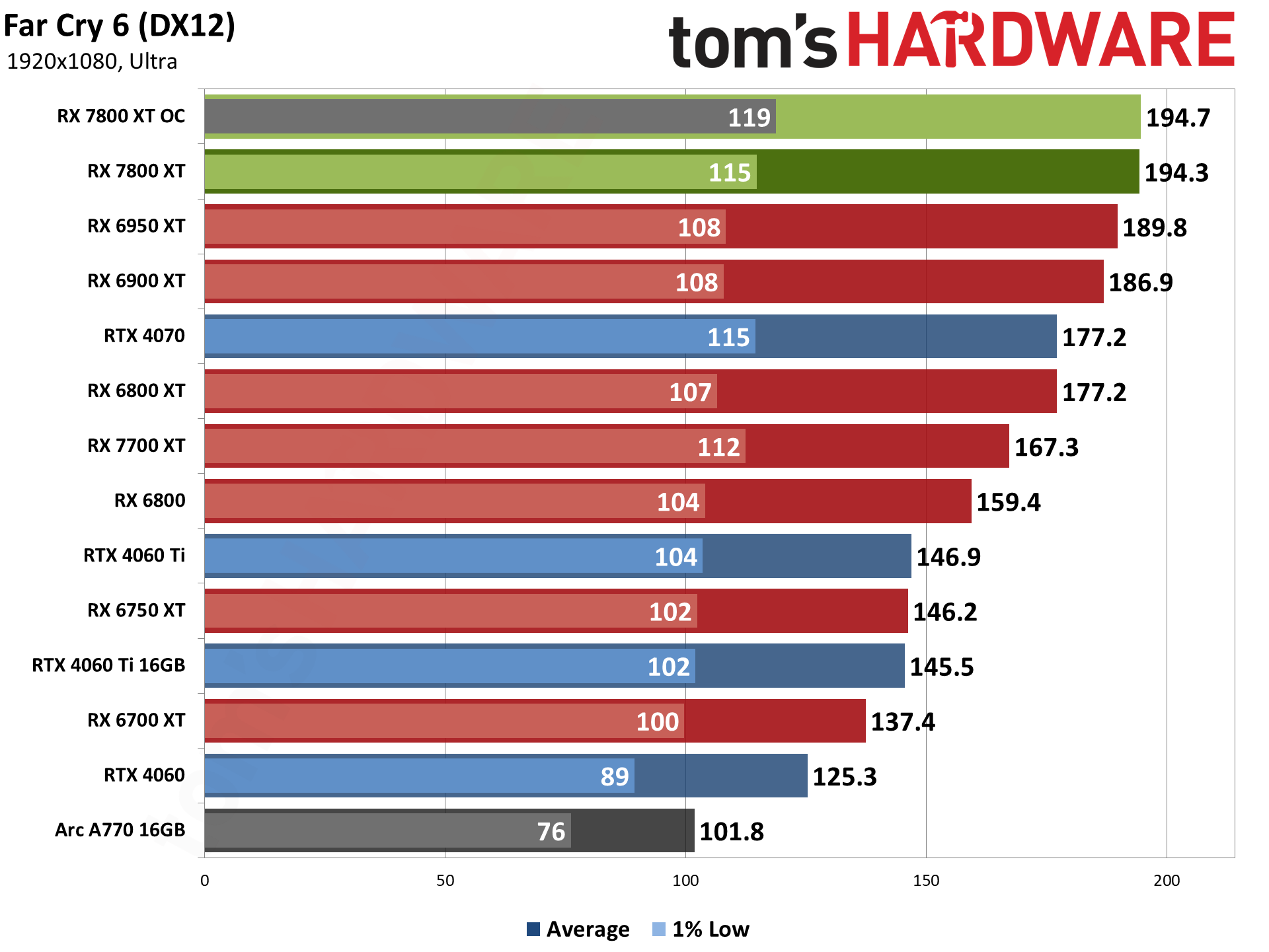
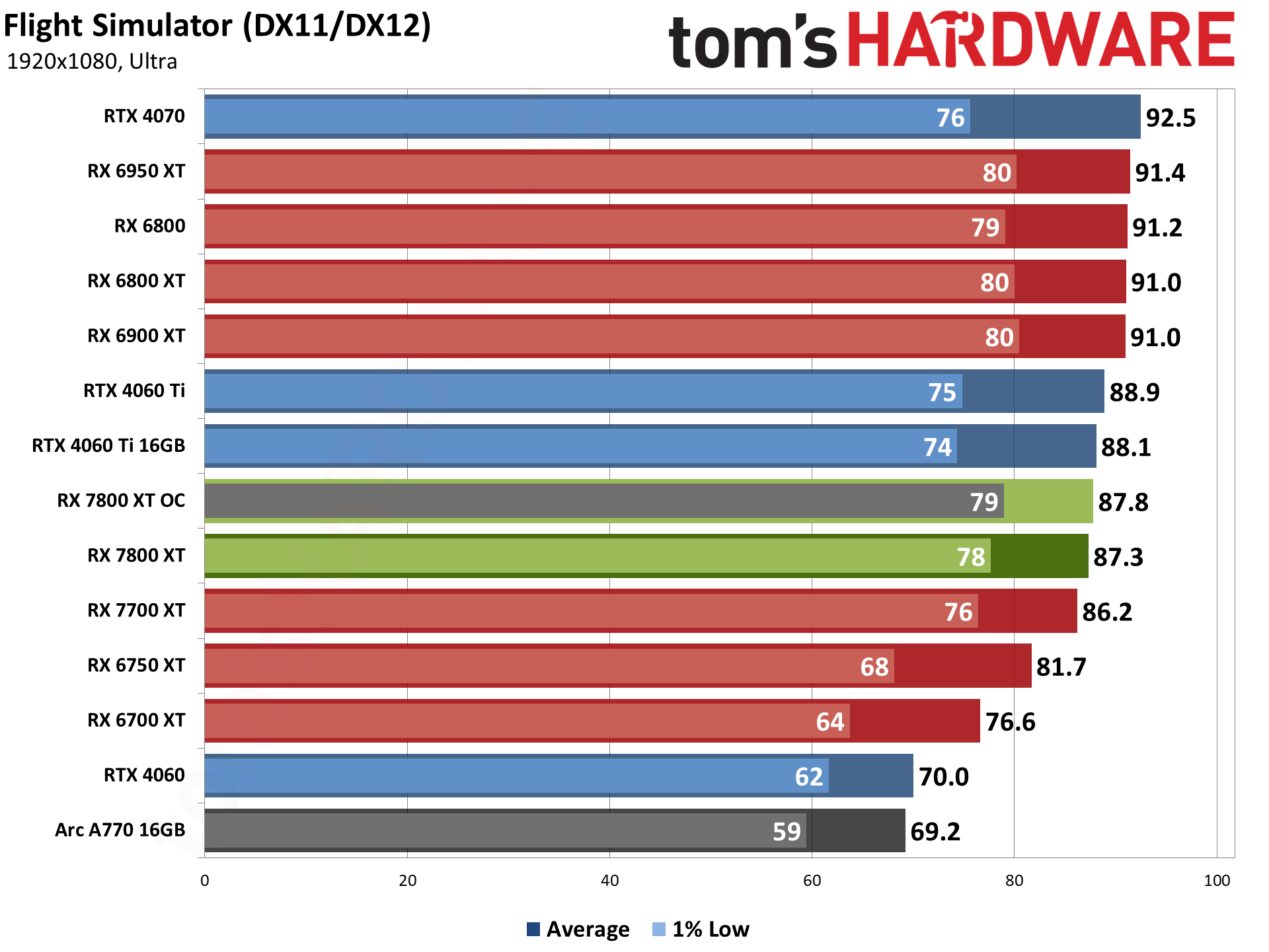

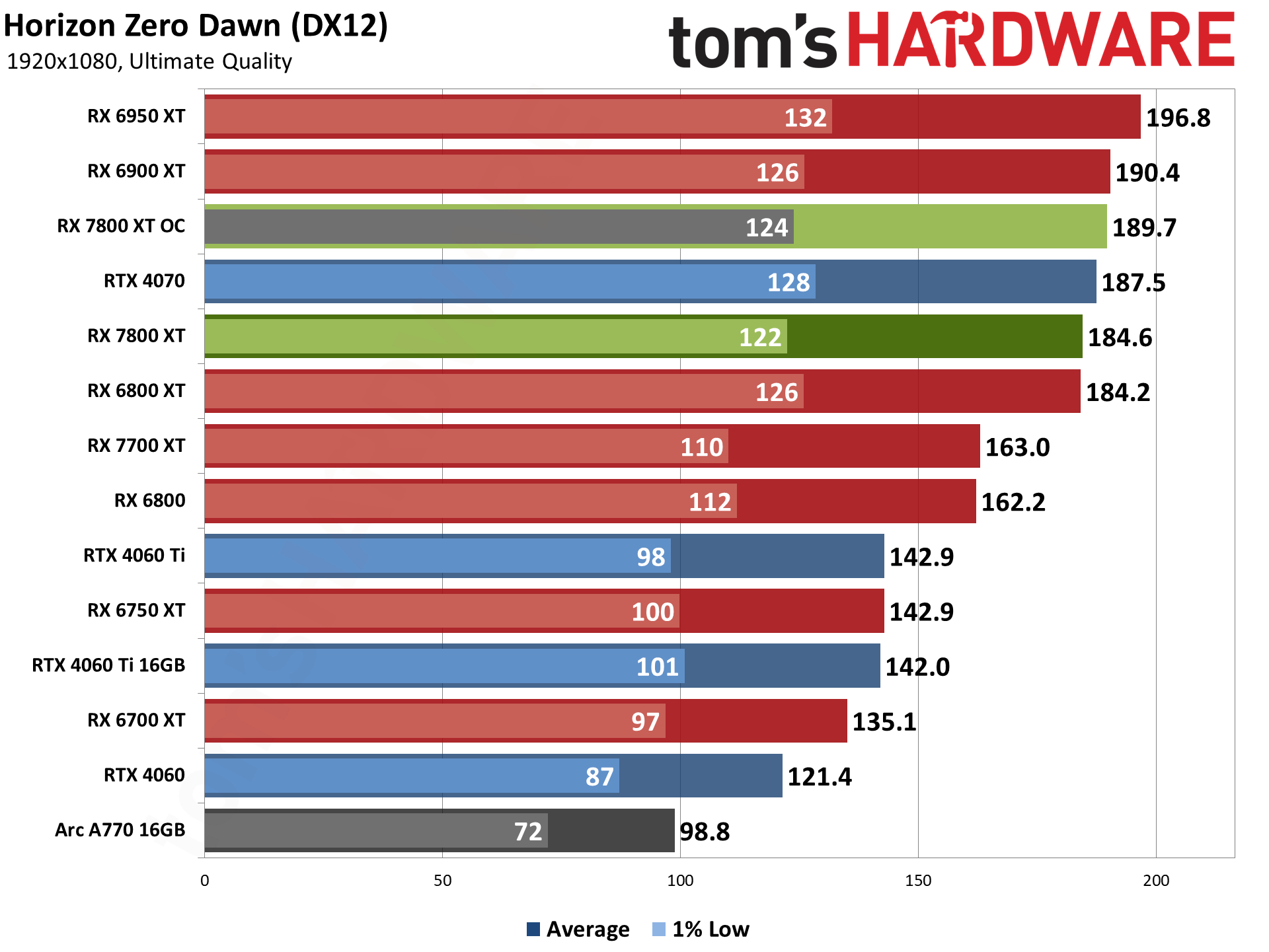

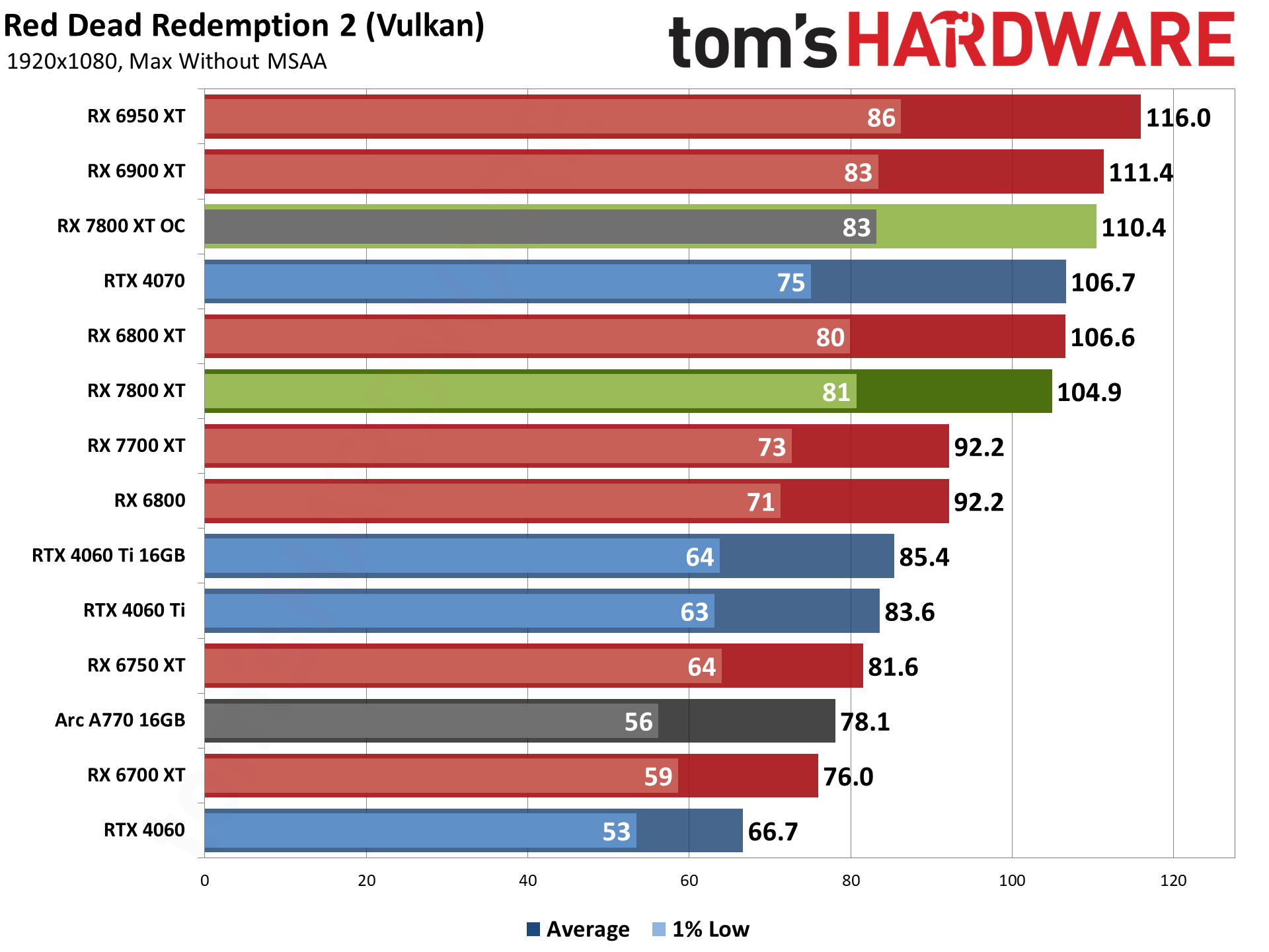
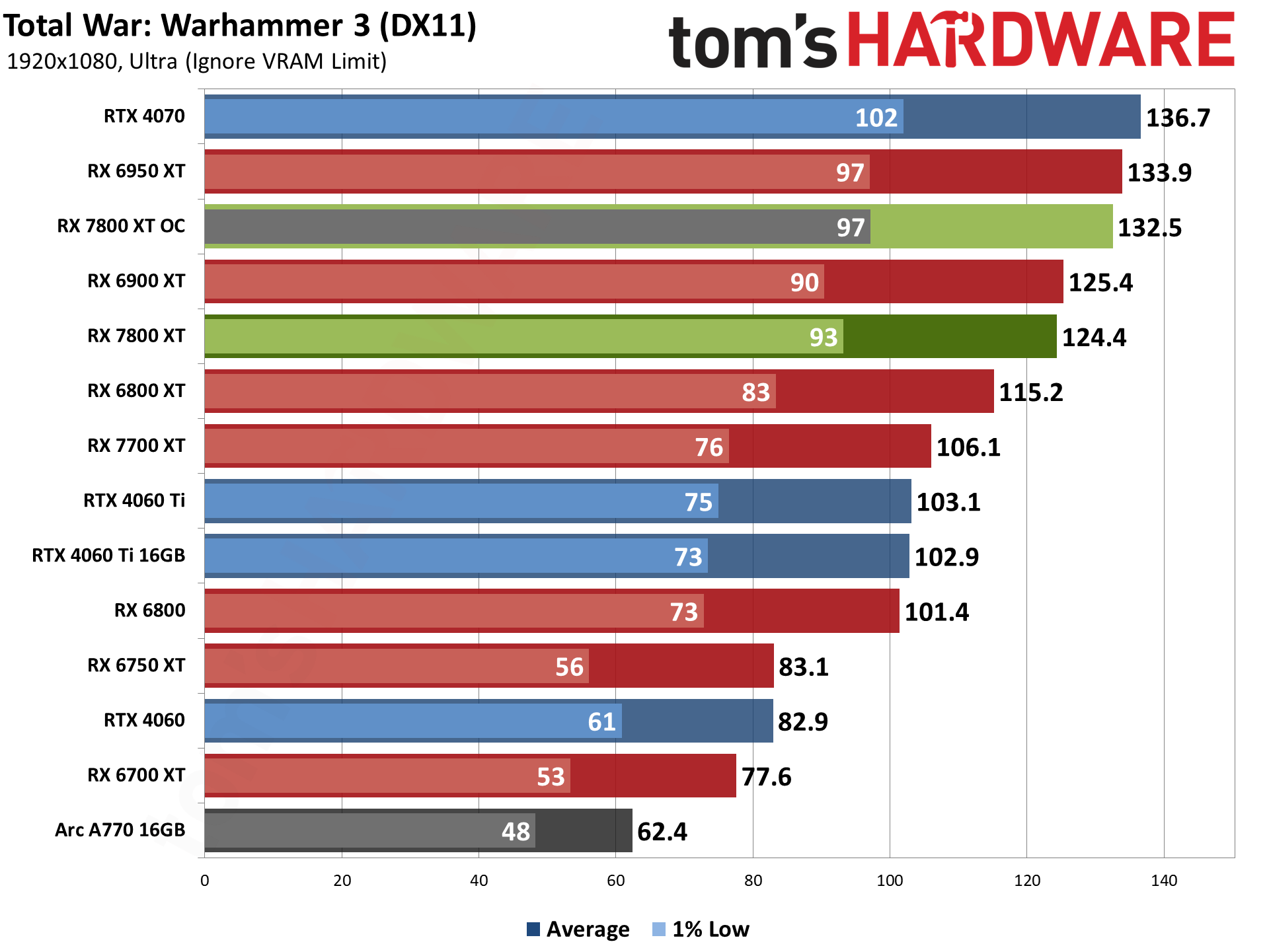
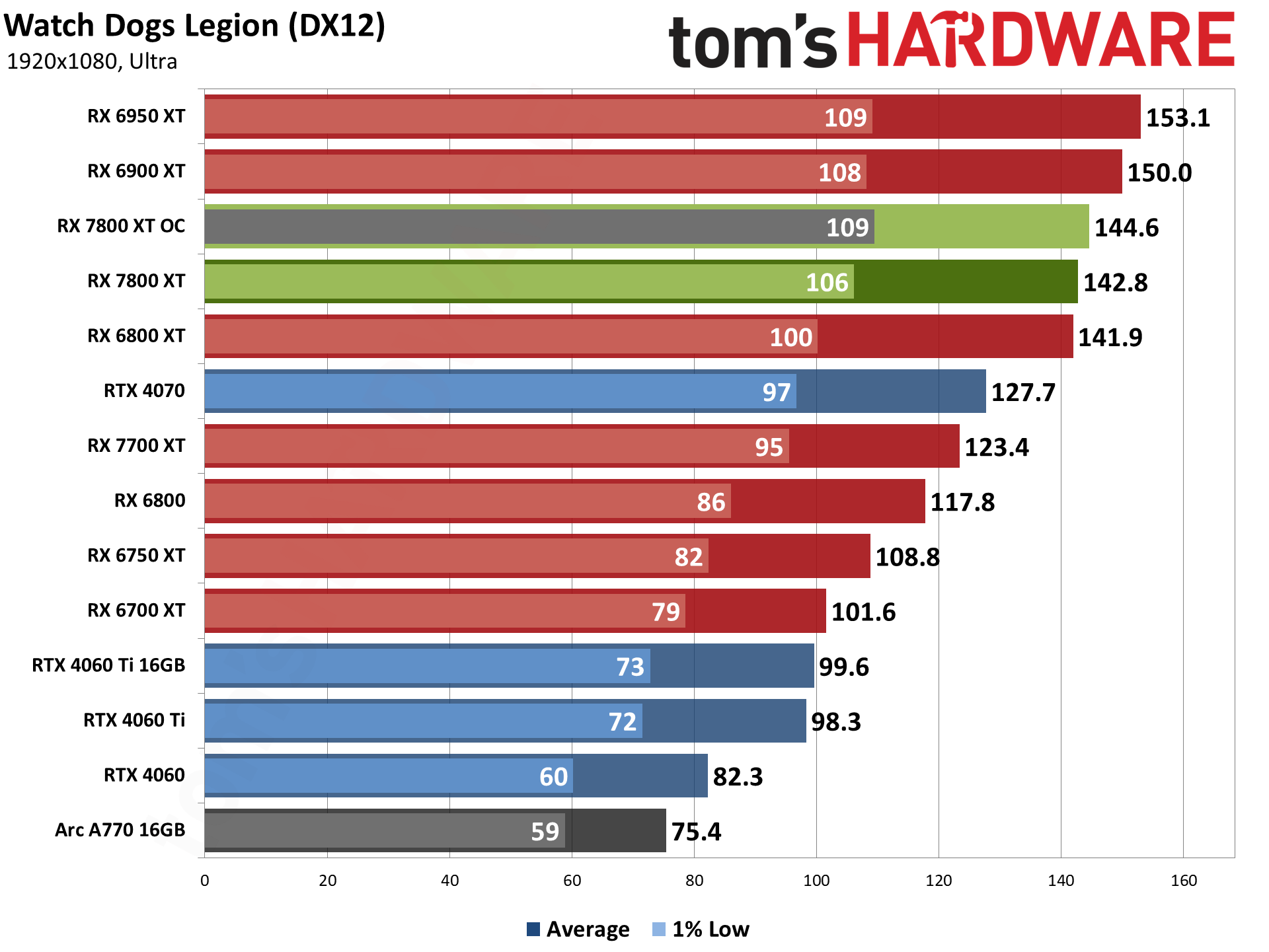
At 1080p ultra in rasterization games, the overall 7800 XT lead compared to the 4060 Ti shrinks to 28%, down from 40%. The biggest factor here comes from Microsoft Flight Simulator, which slams into a CPU limit of around 87–92 fps at ultra settings on the Core i9-13900K. Incidentally, that's also one of the games that shows the largest gains from AMD's 3D V-Cache, so if you happen to be a Flight Simulator devotee, an AMD X3D chip can help a lot.
That's not the only game to show a big shift in relative performance compared to 1440p, though. A Plague Tale: Requiem has a 10% decrease in the margin of victory, and Horizon Zero Dawn has the gap drop by 19%, while most of the other games are 5–8 percent closer at 1080p than at 1440p — again, using the RX 7800 XT and 4060 Ti as the reference points.
The RTX 4070 and 7800 XT are also effectively tied now, with AMD holding a scant 2% lead overall. There's still variation among the games, with the 7800 XT leading by as much as 16% (Borderlands 3) and losing by as much as 9% (Total War: Warhammer 3), but every game runs well north of 60 fps, and only two games (Plague Tale: Requiem and Flight Simulator) fail to break the 100 fps mark.
The RX 7800 XT and RX 6800 XT continue to deliver nearly identical performance, with the overall gap sitting at less than 2% now, and a range of -2% to +10% for the 7800 XT.
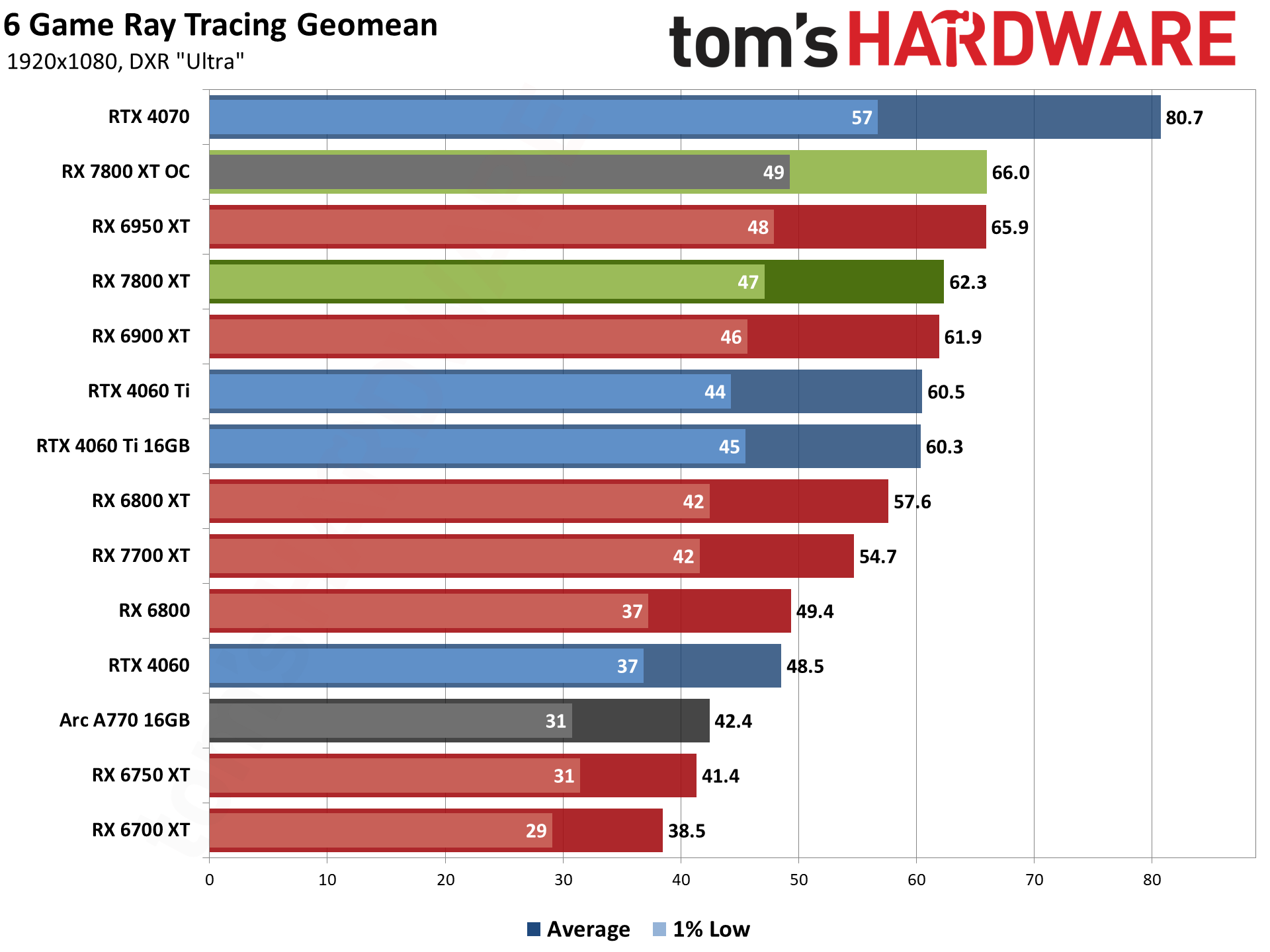
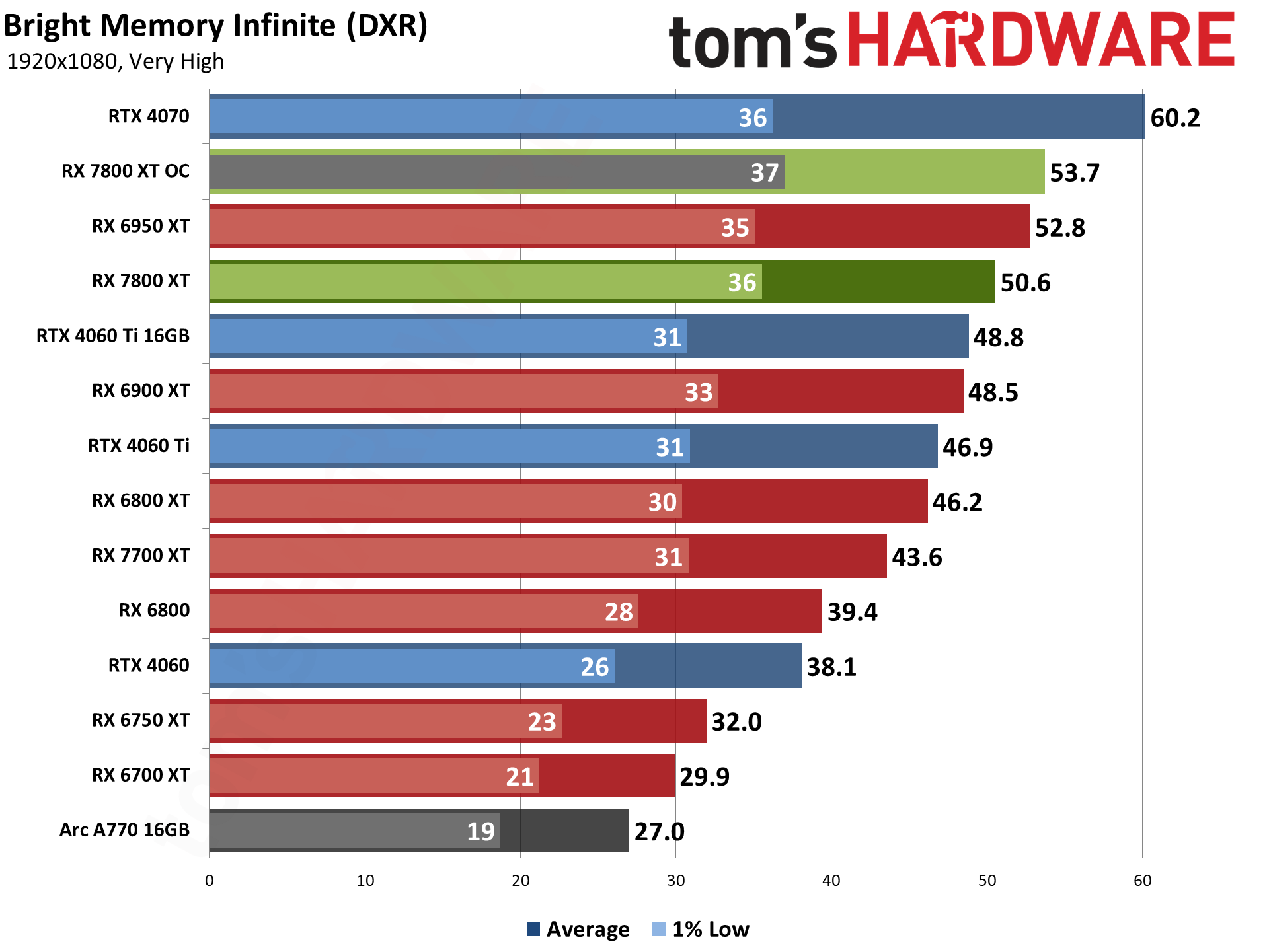
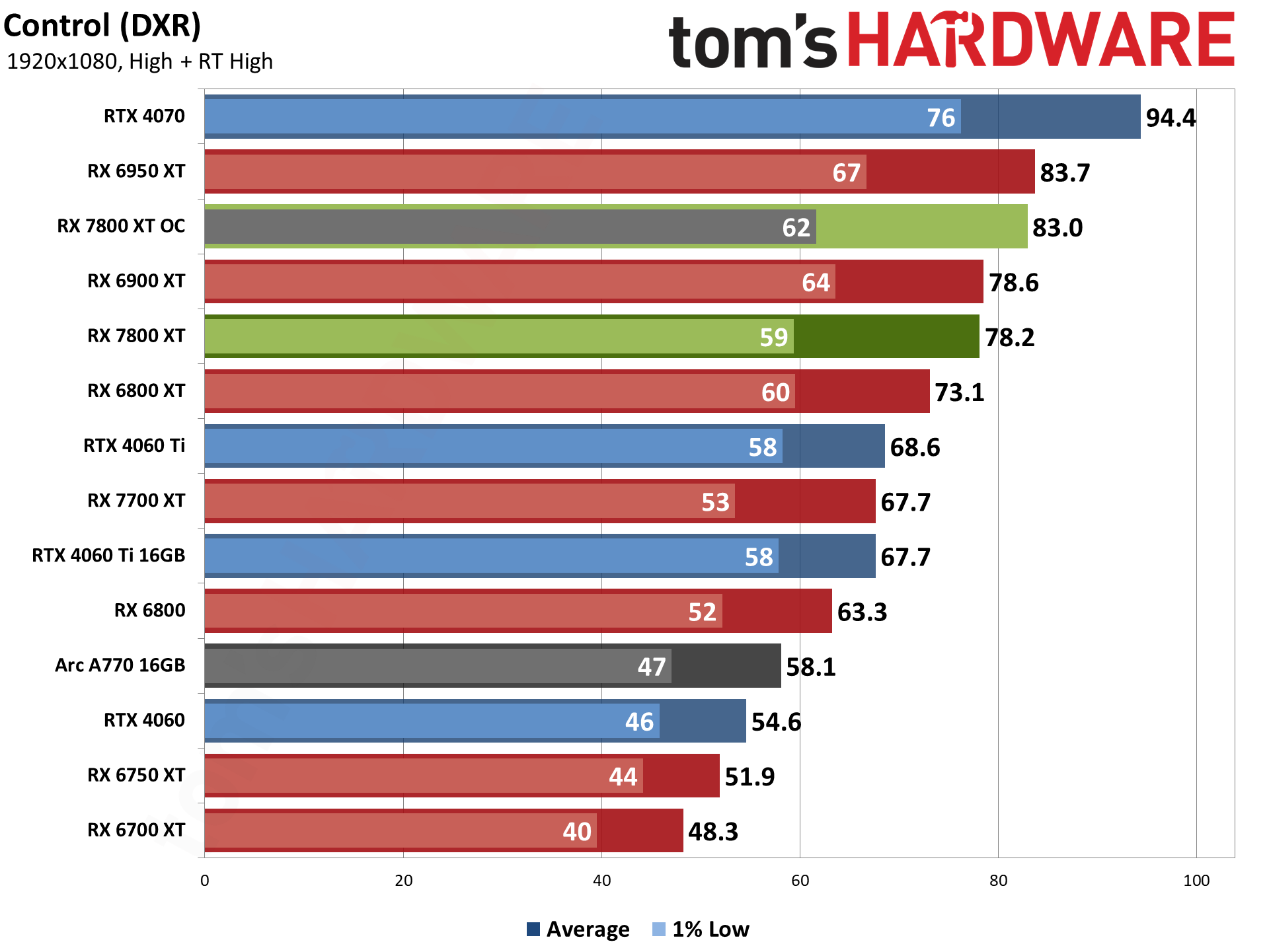
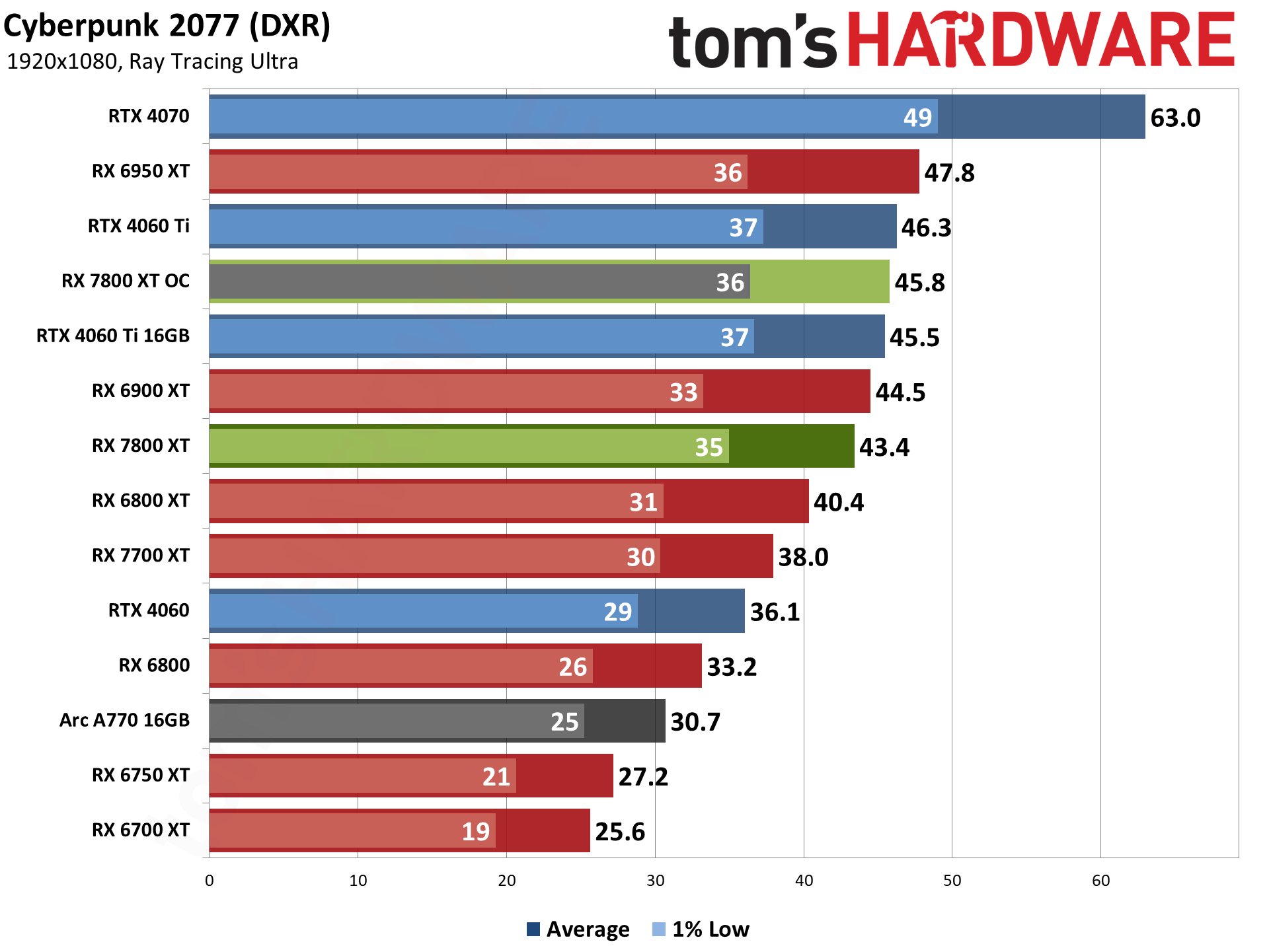
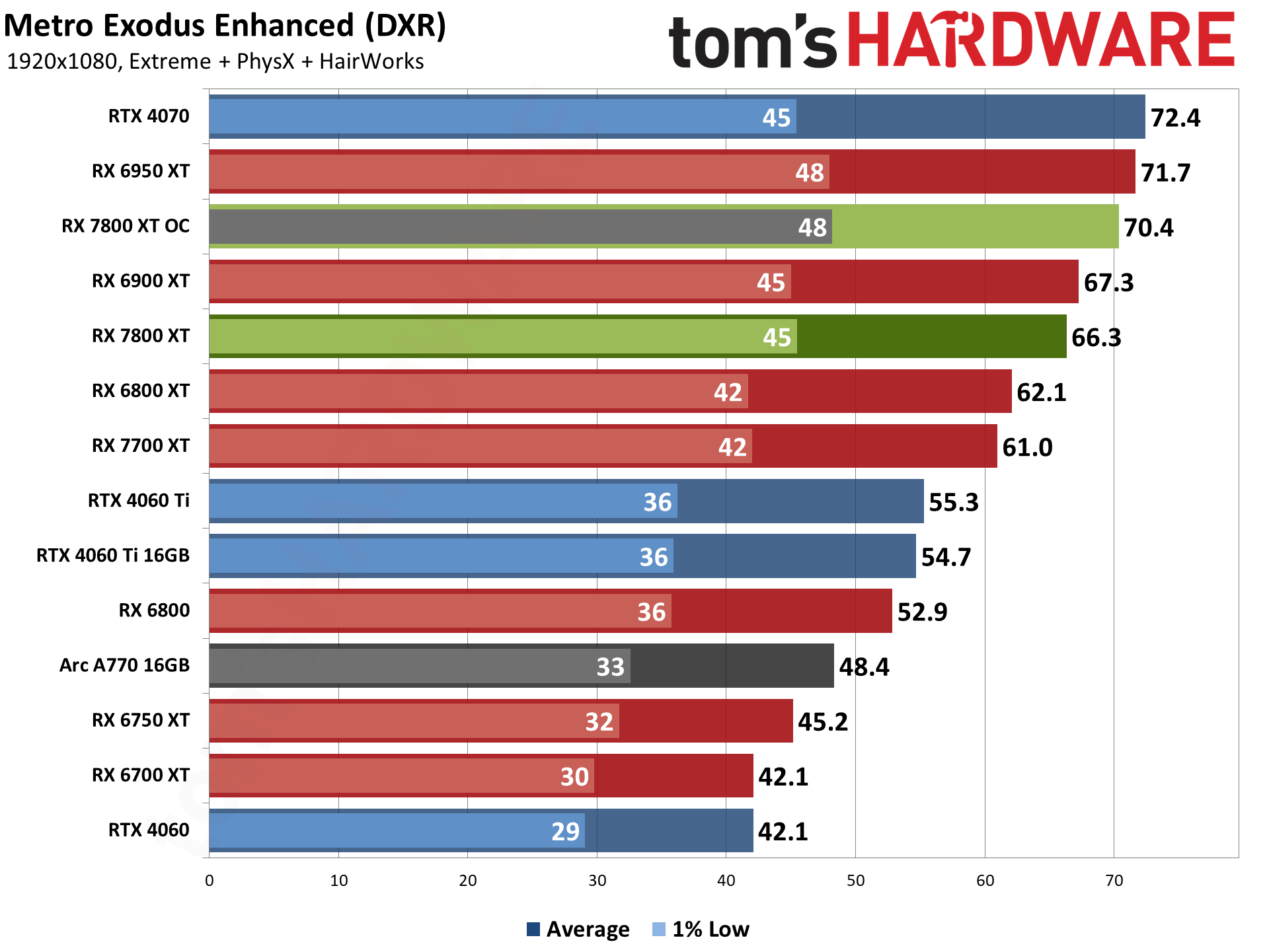
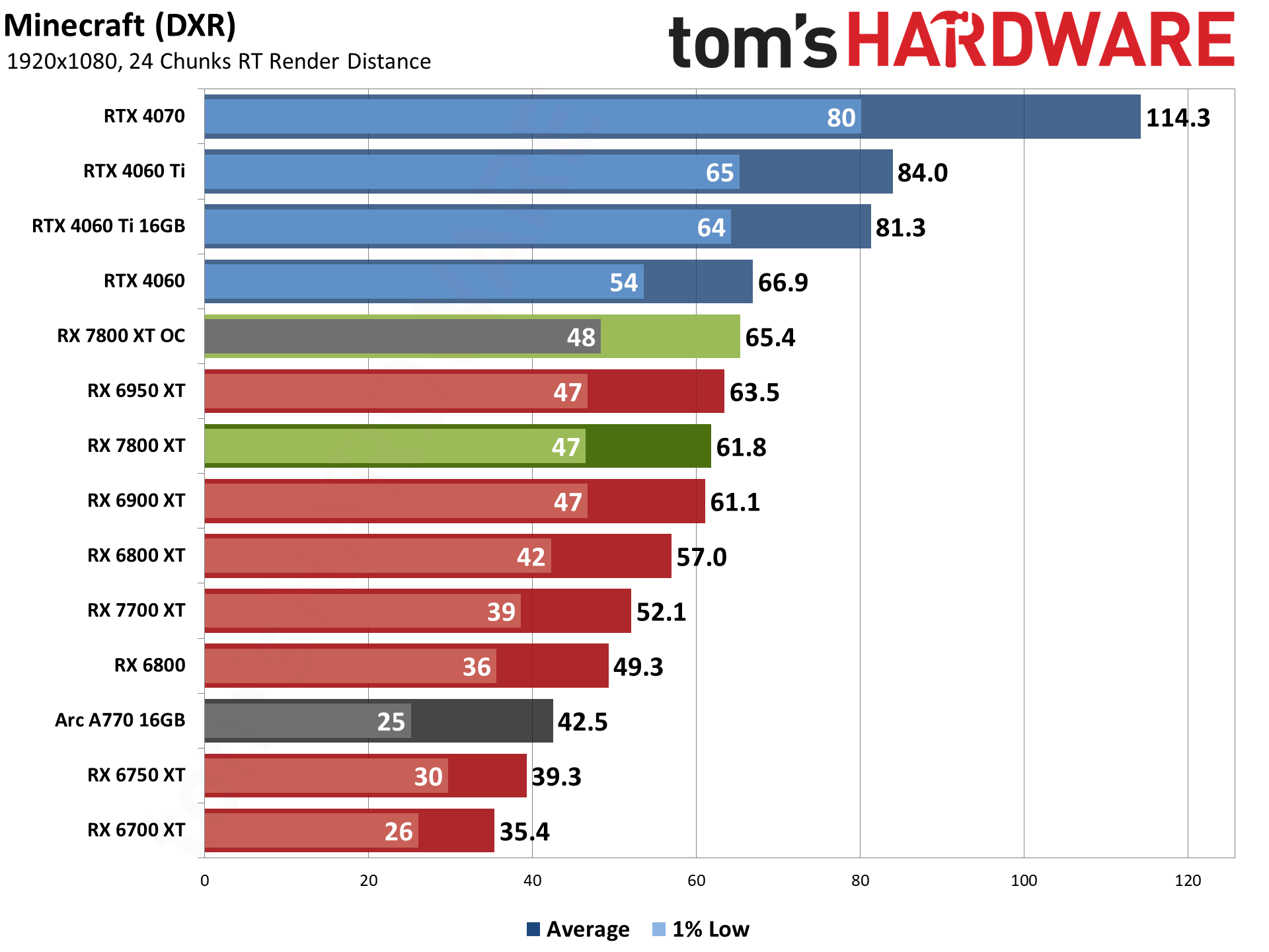
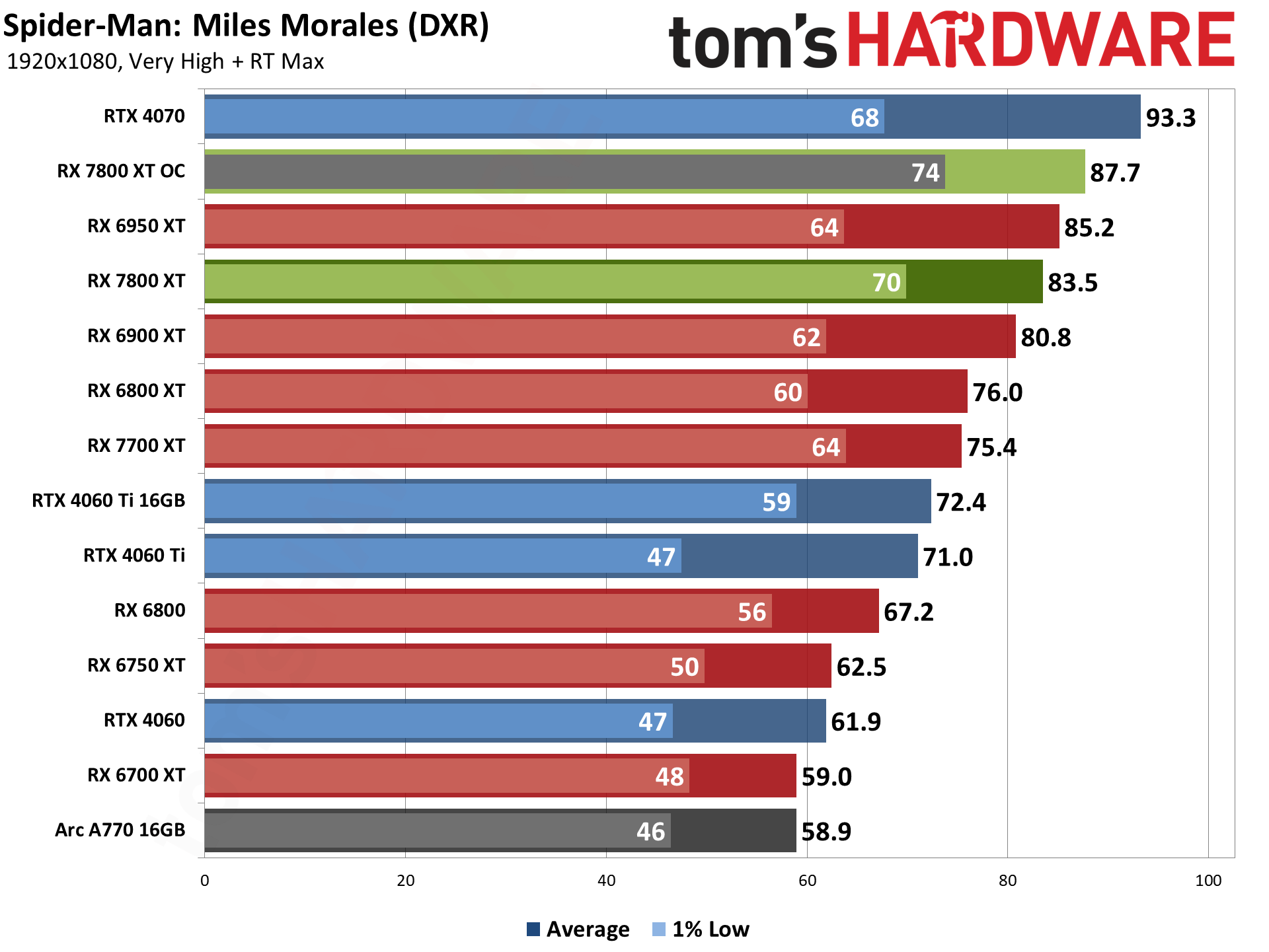
Ray tracing still favors Nvidia GPUs, and because it's more demanding, the margins relative to 1440p ultra remain pretty consistent. For example, the overall DXR result still favors the 7800 XT over the 4060 Ti by 3% compared to 6% — hardly worth mentioning the 3% delta. The two biggest changes come from Cyberpunk and Spider-Man, which had a 7% net drop, while the other four games have relative performance within 2% of the 1440p results.
It's the same story elsewhere. The RTX 4070 comes out 30% ahead of the 7800 XT at 1080p ultra in our DXR suite — 3% more than the 1440p result. Likewise, 7800 XT and 6800 XT remain very close, with an 8% gap separating them — the same as at 1440p.
It's worth noting that of the six "heavy" DXR games we tested, two still fail to break the 60 fps mark, and two more don't clear it by much. Cyberpunk 2077 remains the most demanding of the games, pulling just 43 fps on the 7800 XT, while Bright Memory Infinite (the standalone benchmark, not the regular game that is actually far less demanding) gets 51 fps. Minecraft manages 62 fps, and Metro Exodus gets 66 fps, but both of those have 1% lows well below the 60 fps mark at around 45 fps.
This is why upscaling remains an important consideration, and while AMD has FSR 2 that provides universal support for upscaling across all reasonably modern GPUs (we've even tested it on older Intel integrated graphics), the fact remains that DLSS 2 upscaling is both more prevalent and also delivers higher quality visuals and the same goes for Intel's XeSS (when running on the XMX cores, at least).
Unfortunately, there's no universal upscaling solution that leverages the power of AI and deep learning and also runs across all hardware solutions. FSR 2 uses shader calculations and "hand-written" code, with more blurriness than DLSS and XeSS. DLSS, of course, requires an Nvidia RTX GPU and uses Nvidia's tensor cores, while XeSS requires an Arc GPU and XMX cores for the higher quality mode, with DP4a (4-bit integer) support for other GPUs that end up delivering quality more in line with FSR2.
- MORE: Best Graphics Cards
- MORE: GPU Benchmarks and Hierarchy
- MORE: All Graphics Content
Get Tom's Hardware's best news and in-depth reviews, straight to your inbox.
Current page: Radeon RX 7800 XT: 1080p Ultra Gaming Performance
Prev Page Radeon RX 7800 XT: 1440p Ultra Gaming Performance Next Page Radeon RX 7800 XT: 1080p Medium Gaming Performance
Jarred Walton is a senior editor at Tom's Hardware focusing on everything GPU. He has been working as a tech journalist since 2004, writing for AnandTech, Maximum PC, and PC Gamer. From the first S3 Virge '3D decelerators' to today's GPUs, Jarred keeps up with all the latest graphics trends and is the one to ask about game performance.
-
oofdragon IMO its good at $500 since its on par with 6950XT when overclocked. Lets be honest It should have been at least a hair faster than the 6950XT at factory settings but since its $100 cheaper and virtually runs games just the same, its a solid offering. I feel though that at 1440p a card like the 6800XT is plenty enough, now at around $400 on eBay... and while the 7700XT could be a good deal at around that price, we also have the RX6800 with 16GB for $100 less......Reply
My two cents then, anyone into 60fps gaming should just stick with the 6700XT for 1080p and 6800XT for 1440p, why spend more to get the same? At 4K theres the 7900 series for $700/$800 playing any game just the same as the 4090 at half the price, AMD is a no brainer this gen. I went 7900 also for high refresh 1440p and that single game worth playing with RT enabled -
AgentBirdnest From the perspective of a 1440p RTX 2060 owner - who has had my heart set on, and has been saving up for an RTX 4070 for the last few months, I have to say:Reply
I wish I bought a Free-Sync instead of G-Sync monitor (there was no "G-Sync compatible" at the time.) Because the 7800XT is mighty compelling. 4070-like performance for $100 cheaper, and even the ray-tracing performance is close enough that I probably wouldn't notice in most games. A 50-watt difference is actually enough to make me uncomfortable after an hour of gaming in this room. But for $100 less than the 4070, I might be able to live with that.
But I can't live without my variable refresh rate, and am not willing to splurge on a new monitor that I don't need. So, a higher-priced card for me, unless Nvidia drops the price a few bucks or makes a compelling Super-refresh before the end of the year, but I won't hold my breath.
The 7700xt is just... puzzling. All I have to say is, "Why?"
As always, props for the great review, Jarred! I haven't read through every page just yet, I'll do that a bit later. But the benchmarks and analysis I saw so far look great. Thanks for the hard work. -
Elusive Ruse It's a better 6800XT at a lower price, nothing exciting as far as generational leap goes but it beats every card at its price point.Reply -
Frozoken Just so u know u absolutely need to undervolt amd cards when overclocking them to get extra performance. Techpowerup was seeing roughly 15% gains in fps from their ocReply -
Avro Arrow Reply
Sure, but it's SUPPOSED to do that. The cost per frame is SUPPOSED to go down every generation. Remember how the $500 RTX 3070 was slightly faster than the $1200 RTX 2080 Ti? That's what's supposed to happen.Elusive Ruse said:It's a better 6800XT at a lower price, nothing exciting as far as generational leap goes but it beats every card at its price point.
The RX 7800 XT is supposed to be Navi 31, just like the RX 6800 XT is Navi 21. AMD is royally screwing people here with a deceptive naming scheme. -
Colif it competes well against 4070 if you don't use RT, and its cheaper.Reply
It walks all over both 4060 models.
neither AMD or Nvidia have a perfect record this generation when it comes to naming really. -
Elusive Ruse Reply
I don't buy GPUs based on their names. For me it's quite simple; I buy the best bang for my buck regardless of the badge and name.Avro Arrow said:Sure, but it's SUPPOSED to do that. The cost per frame is SUPPOSED to go down every generation. Remember how the $500 RTX 3070 was slightly faster than the $1200 RTX 2080 Ti? That's what's supposed to happen.
The RX 7800 XT is supposed to be Navi 31, just like the RX 6800 XT is Navi 21. AMD is royally screwing people here with a deceptive naming scheme. -
Upacs Reply
Exactly. What matters is price/performance ratio (and features and stability). Naming is irrelevant and only for the clueless consumer that assumes higher is always better. But none of those here, right?Elusive Ruse said:I don't buy GPUs based on their names. For me it's quite simple; I buy the best bang for my buck regardless of the badge and name. -
PEnns I am really tempted to buy the 6800 XT and call it a day (and wait for another 2-3 years maybe).Reply
The 7800 XT seemed like a decent new card - but the deal breaker was the loudness but nothing else really.
